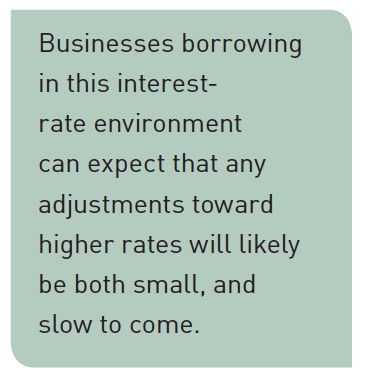HOME | ABOUT US | MEDIA KIT | CONTACT US | INQUIRE
HOME | ABOUT US | MEDIA KIT | CONTACT US | INQUIRE

The U.S. economy continues to be lukewarm. The most recent GDP report showed weakness across nearly all sectors. This marks the third year in a row that first-quarter results have been lackluster. The previous two were blamed primarily on the weather’s effects on economic activity. However, this past winter was relatively benign and therefore not a negative factor.
Economic growth was weak. Consumption spending remained the largest component to expansion, but the growth in consumer spending slowed from the previous quarter. The biggest detractors from global growth came from business investment, inventory drag and net exports.
Despite this weakness, we expect this seasonal pattern to reverse as in the past and growth to accelerate into the second half of 2016, with early surveys already pointing to second-quarter improvement.
We can expect the economy to benefit from the recent weakness in the U.S. dollar (helping exporters) and continued low energy costs, combined with low borrowing rates—all supporting consumers and businesses. Personal incomes continue to improve month-over-month, exceeding personal spending. This net savings trend is accruing to households, bolstering consumers’ capacity to continue to support economic expansion.
Even this modest pace of GDP growth has been sufficient to support continued improvement in the labor market, pushing employment at or near most benchmarks of full employment. This was noted in a recent Fed statement saying, “labor market conditions have improved further even as growth in economic activity appears to have slowed.”
Although wage pressures are still restrained, unit labor costs are increasing, putting pressure on prices. This increase is gaining attention as it shows up in inflation measures and is important, along with employment, in policy makers’ deliberations about the direction of interest rates. But despite the modest pick-up in inflation measures, the Federal Open Market Committee has said inflation continues to move below its long-run objective.
 Our assessment of the Fed’s stance, based on news releases and public comments, is that they intend to continue on a path to interest-rate policy normalization, but will be very cautious about the pace of change to avoid undermining economic momentum. This was evident in a March Fed report stating its outlook would warrant “gradual increases in the federal funds rate.” Also, the committee revised its outlook from December’s statement, which indicated the chance of four rate hikes in 2016 could be reduced to two hikes. This also bears itself out in the median expectations found in the Fed’s “dot plot” charts. These expectations are consistent with Fed remarks that all policy moves will be data-dependent and that rate increases are not on a preset course; rather, the Fed is considering developments on a month-to-month basis.
Our assessment of the Fed’s stance, based on news releases and public comments, is that they intend to continue on a path to interest-rate policy normalization, but will be very cautious about the pace of change to avoid undermining economic momentum. This was evident in a March Fed report stating its outlook would warrant “gradual increases in the federal funds rate.” Also, the committee revised its outlook from December’s statement, which indicated the chance of four rate hikes in 2016 could be reduced to two hikes. This also bears itself out in the median expectations found in the Fed’s “dot plot” charts. These expectations are consistent with Fed remarks that all policy moves will be data-dependent and that rate increases are not on a preset course; rather, the Fed is considering developments on a month-to-month basis.
Typically, when borrowing costs are expected to advance higher and faster, commercial borrowers trend toward locking in low current rates on fixed loans. However, we’ve observed a continued interest in variable rates by borrowers, indicating they believe changes will be slow, and even with two hikes in 2016, projected interest expenses are better at the marginally lower adjustable rates.
The Fed’s measured approach likely means that looking ahead there won’t be significant changes in the climate in which businesses find themselves operating.
The implications for commercial borrowers are that costs will continue to be at historic lows and will be slow to move upward. Businesses therefore may have plenty of runway ahead of them in contemplating capital expenditures and financing decisions around that spending. Additionally, with the U.S. dollar off of its highs against a broad basket of currencies and oil off of its lows and trending upward, the environment for many small- and middle-market companies has improved sufficiently to engage in short- and long-range project financing.
If businesses have been holding off on short- and intermediate-project financing, they may consider borrowing at these still very low rates, knowing the outlook for adjustments may likely be small and slow to come. Long-term projects can still be funded significantly under historical average costs, keeping liquid and short-term assets intact, and maintaining strong balance sheets.